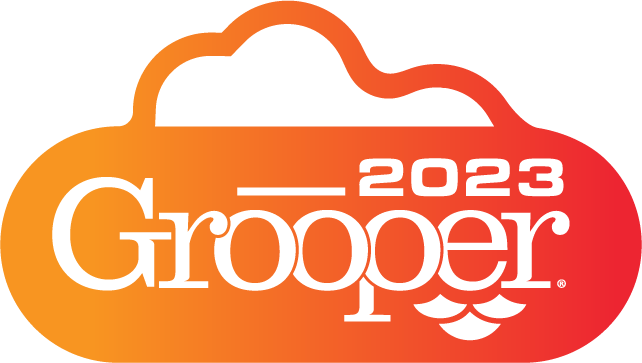What's New in Grooper 2023
Welcome to Grooper 2023!
|
Grooper version 2023 is here! Below you will find brief descriptions on new and/or changed features. When available, follow any links to extended articles on a topic. |
Expanded Web Client
In Grooper 2022, we introduced the Grooper Web Client for document review. In version 2023, the web client was expanded to incorporate all aspects of the Grooper product suite. After installing and configuring the Grooper Web Server, users can now design Grooper content using the web client's "Design" page, just as if they were using the thick client Grooper Design Studio application.
Deploying Grooper over a web server is a more distributable, more secure, and more modern experience. With Grooper 2023, Grooper can be fully hosted on a web server. Users can then connect to the Grooper web application via web browser. This means the software only has to be fully installed on one server! There's no more need to install Grooper on each user's workstation. This makes the Grooper environment easier to manage and makes it easier to distribute the platform to new users. Furthermore, the only user who needs access to the Grooper database and file store is the web server's IIS account. This makes for a more secure environment. Only the web server's user itself will write to the database and file store.
- Access permissions to the Grooper platform can be further managed using the new Permission Sets feature (See Below). Permission Sets allow you to dictate what areas of the Grooper web application users have access to. For example, you can restrict document review users from accessing the "Design" page where Grooper designers configure Grooper nodes like Content Models and Batch Processes.
Instructions on installing the Grooper Web Server application and further information on how to set up your server can be found in the Install and Setup - 2023 article.
Permission Sets
Permission Sets are a new way of handling user access in Grooper 2023. With Permission Sets, Grooper designers will define which areas of the Grooper web client users can access, using Windows ACL (Access Control List) definitions.
A common Permission Sets configuration will add two sets of permissions:
- Designer permissions
- Grooper admins and designers should be given full access to all pages, including "Design".
- This will give this users full control to configure Grooper nodes in Design, as well as full rights to review Batches in the "Batches" and "Tasks" pages.
- Reviewer permissions
- Grooper reviewers should have more limited access. Typically, they will only be given access to the "Batches" and/or "Tasks" pages and NEVER the "Design" page.
- This will allow reviewers to review Batches in the "Batches" and/or "Tasks" pages, but restrict their ability to configure Grooper nodes in "Design".
Permission Sets also allow fine-grained control of object commands in ways never before capable in Grooper. For example, you can use Permission Sets to remove a document review user's ability to delete a Batch.
For more information, visit the Permission Sets article.
Data Viewer Styling with CSS
Have you ever wanted to make a Data Model look more like the document you're trying to review in a Review step? With CSS styling, now you can! In version 2023, we allow users to style how fields, tables and sections appear in the Data Viewer using CSS. This gives you unparalleled control over a Data Model's look and layout when reviewing Grooper's data extraction results.
For more information, visit the CSS Data Viewer Styling.
Web Services Lookup
Grooper can now connect to an API endpoint to validate and return data using the new Web Service Lookup found on a Data Model, much the same way you can use Grooper fields to lookup values in a database for a Database Lookup. The Web Service Lookup uses either GET or POST requests to return values from an API endpoint.
For more information, visit the Web Service Lookup article.
Improved Azure OCR Integration
Support for multiple versions of Azure Cognitive Services has been included. Users can now choose between versions 3.0, 3.1, and 3.2. If calling the Read API version 3.2 or higher, users may now select the model version as well.
We have also incorporated a new "Supplement Results" mode. This mode intends to get the best of both worlds between Azure OCR and traditional OCR. When using this mode, Transym OCR results will supplement Azure OCR results where needed. This has been demonstrated to provide more accurate OCR for densely populated table values, particularly for smaller decimal values and single character values. Furthermore, the supplemental Transym results provide character position data where Azure OCR does not. This vastly improves results where Grooper's extraction logic utilizes text position information (i.e. x,y coordinates) to collect data.
Check back soon for an article on this topic!
GPT Integration
Version 2023 represents our first foray into GPT based extraction! There are three new methods of using OpenAI GPT APIs to process documents:
- The GPT Complete extractor, configurable on Value Readers, Data Types and wherever extractor properties are found near you.
- The GPT Lookup configured on a Data Model.
- The GPT Embeddings classification method.
For more information, check out the GPT Integration article.

